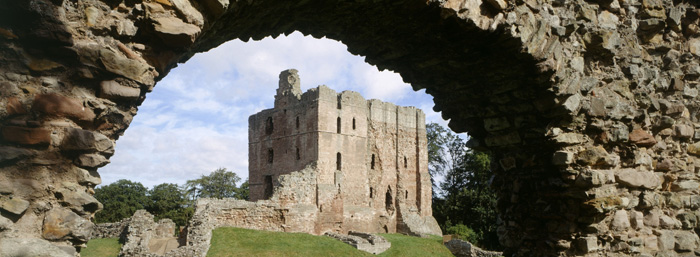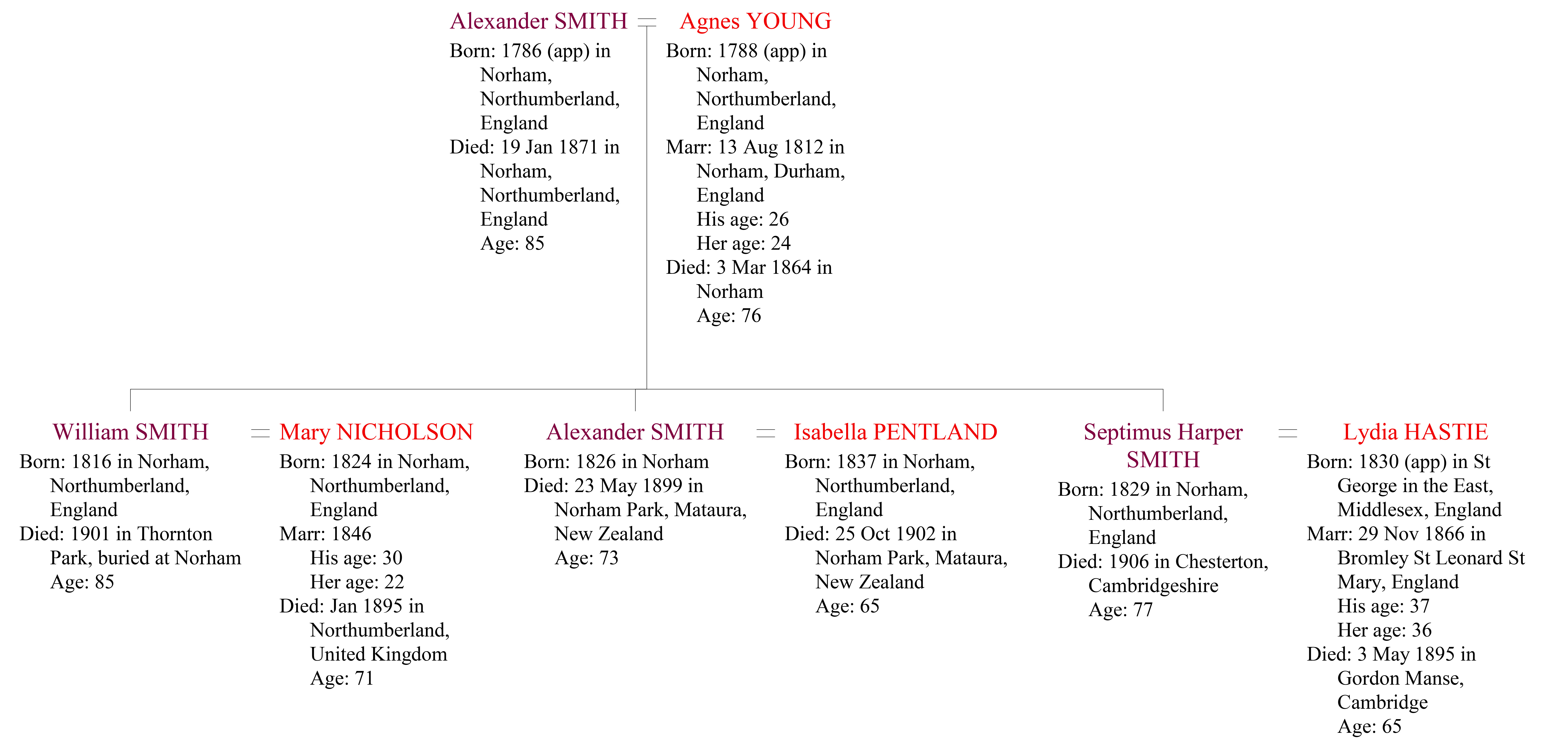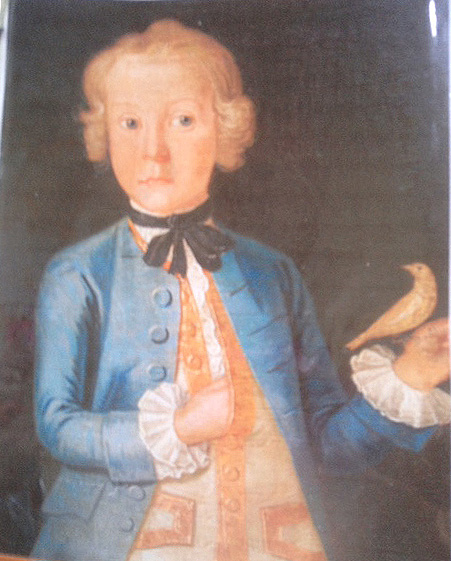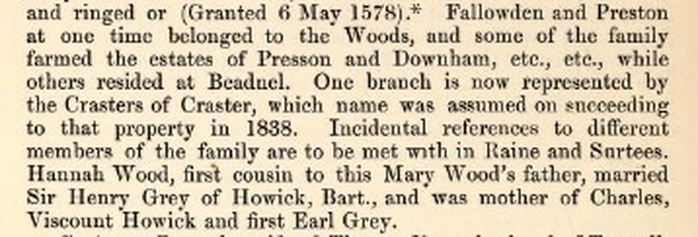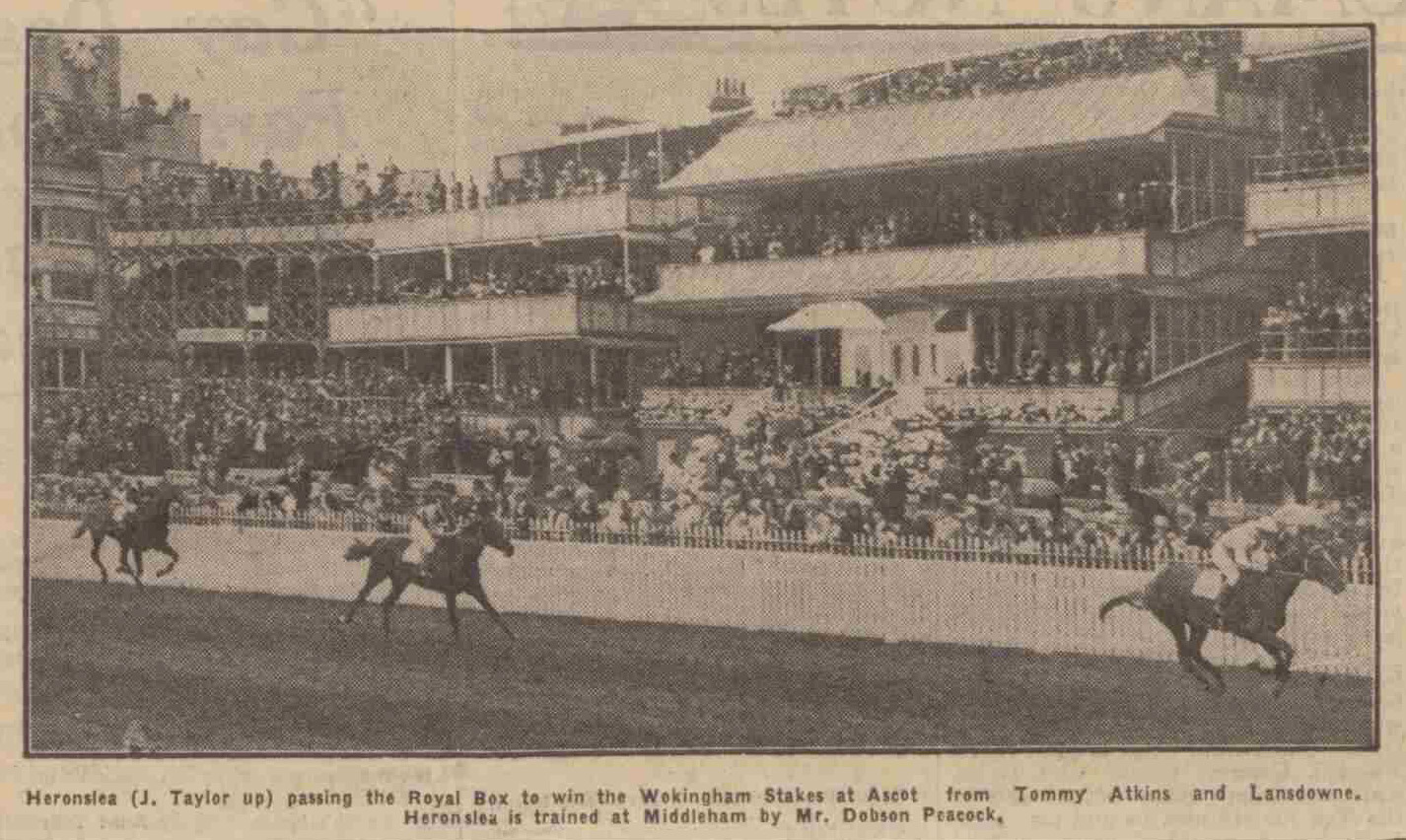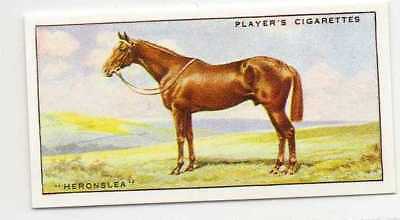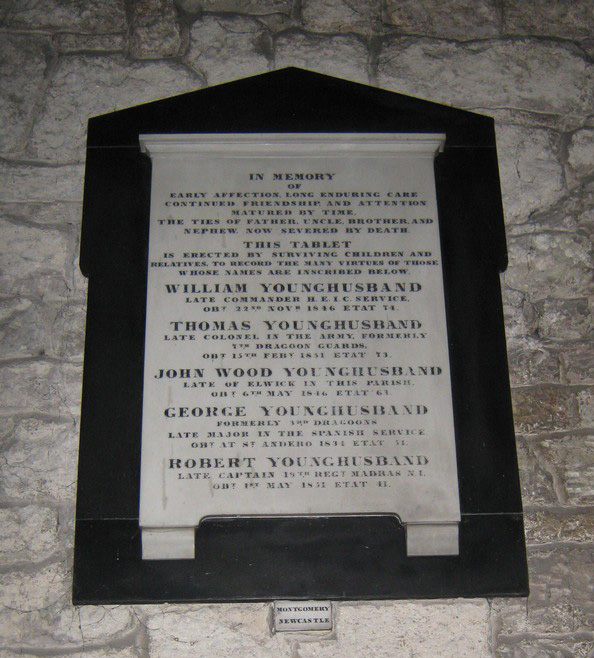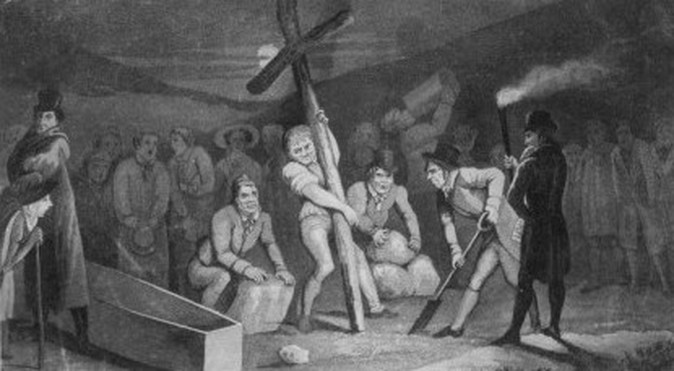|
Last month I touched upon the issue of collaborative working and how, when approached with respect and caution, it can be extremely rewarding and beneficial, not to mention fun, piecing together the past of your mutual ancestors. A perfect example at work is the research into the ancestors and descendants of Alexander Smith (1786-1871) and Agnes Young (1788-1864) of Norham. Of their eight children, two were taken by the cholera epidemic of 1832 aged 14 & 15, one was killed following a fall from his horse in 1845 aged 32, and another, a Medical Doctor died in 1848 aged 23. Of the four remaining children, two Alexander jnr and George emigrated to New Zealand, where George died unmarried and Alexander jnr and his wife Isabella Pentland (also a native of Norham), founded the dynasty of the Smith family of One Tree Point and Norham Park. Heather Culling-Smith a descendant of this particular branch is my contact in New Zealand. The seventh child of Alexander Smith and Agnes Young was Septimus Harper-Smith, who tops the branch of the tree now represented in the south of England by Patrick Harper-Smith whose ‘significant’ birthday this year, saw the family paying a visit to their ancestral homeland ‘up north’, and sparked a resurgence in interest in the family history. In particular the whereabouts of a certain sword, which had seen action in the Napoleonic War. The sword had belonged to Alexander Smith snr, and was known to be hanging in a hallway of a house in Castle Terrace, Berwick upon Tweed, circa 1920. This house belonged to the descendants of the fourth surviving son of Alexander and Agnes – William Smith who on the 26th March 1846 married Mary Nicholson of the Nicholson family of Thornton, near Norham in Northumberland. A series of wills written by the unmarried members of this family in Castle Terrace, in the 1940’s detailed specific items and named various nieces and nephews as beneficiaries. These were potential relatives that were unknown to any of us up until this point, and as all the beneficiaries were also living in either New Zealand or Australia, I set ‘cousin’ Heather the task of tracking them down. In her own words Heather says of this trans-global collaboration: When I got the wills I had little hope of finding family. After two months of doing nothing and preparing to go to Auckland and Research Centre and Archives, my guilty conscience made me take those wills with me. How thrilled I have been to get immersed in this wider family - historically and current. Drive me harder Susie. Heather has proved to be a super sleuth indeed, not only tracking down the descendants of both Aaron Young Smith and Arthur Alexander Smith, but also the bequests that were shipped to New Zealand in 1947, together with a scrap book full of interesting ‘snippets’. However as is often the case with family history, it poses more questions than it answers. The family portraits itemised in the wills and on the customs documents, were certainly not who they purported to be – that is of William Smith and his wife Mary Nicholson. Suggestions as to who these young gentlemen may actually be, will be gratefully received! As the scrapbook in particular, contains information largely based on oral tradition, it has I fear, deviated rather from the path of fact towards that of fiction. It also focuses on the extensive Nicholson family, who although are extremely interesting, and particularly adept in the art of advantageous marriages, have been accounted for elsewhere. I can however, categorically state that ‘Nicholson St’ in Edinburgh was not named, or renamed, as has been suggested, for Captain Ralph Nicholson of Thornton, who died in Edinburgh in 1853 when a dislodged musket ball he received in 1811 reached his heart! Indeed these two Nicholson families would appear to be entirely unrelated. Therefore this month’s blog is a brief look at some of the ‘Borders’ ancestry which applies directly to this branch of the family. I hope they find it of interest and adds a bit more to the information they already have in their possession. Indeed this account will take a brief overview of the means by which the aforementioned Ralph came to be styled of Thornton Park in the first place, namely through his wife Mary Wood. Mary Wood was born in 1783, the 4th of eight children and the 1st to live beyond infancy to William Wood of Pressen, Downham, Eccles and Thornton Park, and his wife Elizabeth (Betty) Wallis. Betty was the daughter of the Rev Richard Wallis vicar of Carham, and his wife Elizabeth Rotherham from Haydon Bridge further south in Northumberland. Both ‘Wallis’ and ‘Rotherham’ feature as Christian names in subsequent generations and this small piece of information explains their origin. It comes as somewhat of a surprise that this has not been picked up by Nicholson researchers before, as the Wood family pedigree features in several Northumberland county histories as well as in ‘The Genealogist’ Volume II published in 1878. For this reason I shall not delve into the family too much here, but shall provide the relevant links at the end of the post. Suffice it to say that there are close familial connections through various intermarriages, inheritance and blood, with the landed county families of; Grey of Falloden and Howick, (Hannah Wood d. 1764, through whom Falloden came to the Grey family); The Craster family of Craster Tower (Thomas Wood who assumed the name Craster in 1838 on succeeding to the estate from his Uncle Shafto Craster in 1837). Closer still (1st cousins) were the Comptons of Carham Hall and the Younghusbands of Budle & Elwick whose links to Northumberland pre-date the Norman Conquest! Mary’s parents Betty Wallis and William Wood died in 1801 and 1803 respectively. Although the eldest, and 20 years old at the time, Mary was still not ‘of age’ in the eyes of law. The probate documents relating to her father’s death in 1803 placed all the children in the guardianship of their paternal aunt Mary Younghusband (nee Wood) until they reached the age of 21. Mary’s siblings with their ages at the time of their father’s death in brackets:
Richard’s affinity and love of horse racing was inherited by his great nephew William Rotherham Smith jnr., (1858 – 1934) the second generation of Smiths to farm at Windywalls, near Kelso. William enjoyed particular success with his horse ‘Heronslea’ who won the Wokingham Stakes at Ascot in 1931 and enjoyed back to back victories in the Ayr Gold Cup in 1930 & 31. Another of his horses ‘Berestoi’ originally entered for the 1934 Derby, but who then scratched, exacted his revenge to beat the winner ‘Windsor Lad’ to win the King Edward VII Stakes at Ascot later that year. Sadly, less than a month later William was dead. The tenancy of the farm of Windywalls on the Roxburgh Estate was being advertised in October, Berestoi was sold in December to Sir Hugh Dennison and was shipped to Australia, where he died in October 1936 before going to stud. All in all a rather abrupt finale, executed by his wife of six years and 28 years his junior. To round it all off, the horses’ legendary trainer Matthew Dobson Peacock, of Manor House, Middleham, passed away himself in 1935. However, his legacy in the world of racing lives on to this day. Hence, by the time of her marriage to Ralph Nicholson in 1820, Mary Wood was the sole survivor and heiress not only to her own portion of her father’s estate but also those of her siblings who had died unmarried. Together Ralph and Mary had three daughters, before she died eight years later in 1828 aged just 45:
One particular family connected to the ‘Wood’ pedigree is that of Younghusband. With a history dating back to Saxon Northumberland, it is packed with so many stories it would fill an encyclopedia. However my eye was drawn to a couple of 'incidents' in particular. The first concerns Thomas Younghusband of Budle, ‘the last gentleman in that part of the county who kept a family piper’. The piper had accompanied Thomas on a trip to the Farne Islands in 1749. On the return trip the boat overturned and all aboard, but one were drowned. All the bodies were subsequently recovered except for that of the piper. ‘It was reported among the villagers that he was the Devil in person who had come for “the wicked squire” and had now got him! The ghost of his unfortunate master was said to haunt Budle and there are several “authentic” accounts of his appearance in the old house shortly before it was pulled down at the beginning of this century.’ [19th century. The present Budle Hall was built for Grieve Smith in 1810.] The second is the bizarre case of two brothers John and Lancelot Younghusband baptised at Bamburgh in 1748 & 1754 respectively, 1st cousins to the Thomas above, who appear to have partaken in an ‘unprecedented' joint suicide pact at Heckley Grange on 10th November 1818. On the tragic morning, while one of them was giving instructions to a ploughboy, in one of their fields, the other brother approached, and asked “are you ready?”. Being answered in the affirmative, they left the field together, and were shortly afterwards discovered within a few yards of each other, having their throats cut and razors lying near their bodies From the pocket watch that was also found lying between the pair, they had timed the event to exactly the same moment. The brothers were buried in Alnwick Parish Churchyard but following a subsequent court ruling of ‘felo de se’ - felony of the self, they were exhumed and reburied at the nearby crossroads as was the custom for suicides at that time. If this is not weird enough, there then followed what would seem today to be an extraordinarily macabre legal case, whereby the Duke of Northumberland exercised his customary right of ‘deodand’ to acquire, by means forfeiture from the brothers’ estates, the two razors they had used to commit suicide. Deodand was an ancient custom whereby the instrument, animal or object that had inflicted ‘untimely’ death became forfeit to the crown or in latter years, to the lord of the manner. Deodand – has its origins in Latin too ‘Deo dandum’ or ‘given to God’, whereby the offending ‘article’ was taken and sold and funds raised used for good causes. This serves as an illustration of the classification of felony as a crime, being inextricably linked to the word, and principle of forfeiture - in a similar way that goods and chattels acquired by ‘ill-gotten gains’ are sold, and proceeds handed to the Treasury today. Deodand, gave an object 'moral agency' i.e an ‘accursed’ object or animal could be blamed for a person’s death, and potentially face trial or execution. The need for its repeal coincided with the evolution of mechanisation, in particular as a result of fatalities on the railways. It was abolished in 1846 and replaced by the ‘Fatal Accidents Act 1846’. Deodand therefore, can surely be seen as the forerunner of the compensation mad society we live in today. As for the Duke, he managed to collect a further two razors, one in 1831 with the dried blood still on it and another in 1834. He also added a velvet covered rope which a man had used to strangle his wife, and no doubt countless other objects to his collection before the practice was abolished. LinksThe Genealogist Vol II 1878 https://archive.org/stream/genealogist00mars#page/6/mode/2up History of Northumberland Vol I, Parish of Bamburgh, Bateson 1893 https://archive.org/stream/historyofnorthum01nort#page/n9/mode/2up History of Northumberland Vol II, Embleton, Ellingham, Howick, Longhoughton & Lesbury. Bateson 1895 https://archive.org/stream/historyofnorthum02nort#page/n7/mode/2up My blogs featuring other branches of this family:
The Wornum and Nicholsons http://www.bordersancestry.co.uk/blog/kissing-cousins Other Smith of Galagate Relatives http://www.bordersancestry.co.uk/blog/hasties-and-a-home-coming
2 Comments
|
AuthorSusie Douglas Archives
August 2022
Categories |
Copyright © 2013 Borders Ancestry
Borders Ancestry is registered with the Information Commissioner's Office No ZA226102 https://ico.org.uk. Read our Privacy Policy
